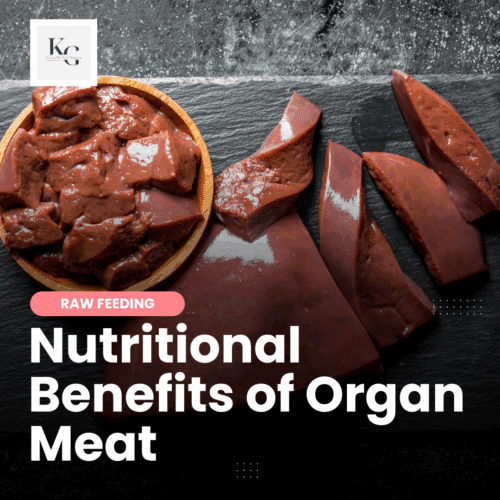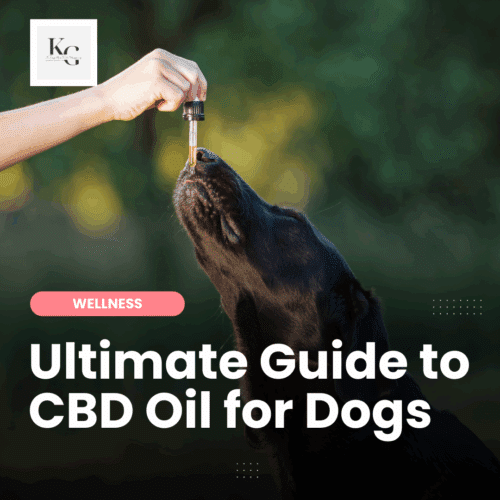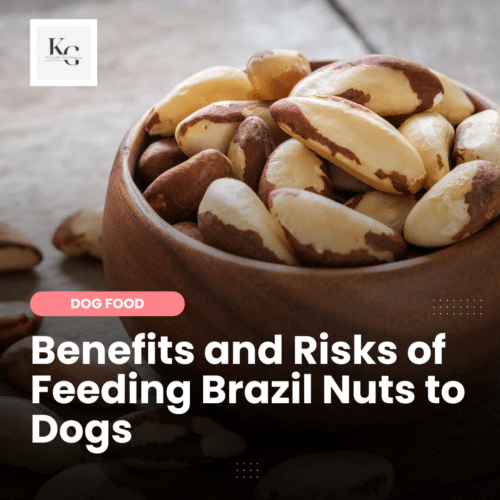Keep the Tail Wagging is supported by pet parents. I occasionally earn a commission (at no additional cost to you) when you click through an affiliate link to one of my favorite products. Thank you for your support. Read More
If you're new to raw feeding, you may have noticed that your dog drinks less water. This isn't a cause for concern if your dog is healthy otherwise. The moisture in raw dog food is a source of hydration, but that doesn't mean our dogs don't need access to clean water. In this article, I will explore the benefits of water for our dogs, tips on keeping our dogs hydrated, and other hydrating foods.
Benefits of Water for Dogs
Water is essential for a dog's overall health and plays several important roles in their system. It helps regulate body temperature, aids digestion, and facilitates nutrient absorption. It also supports organ function, joint lubrication, and overall hydration.
Signs of Dehydration in Dogs
Signs of dehydration in dogs may include:
- Dry or sticky gums
- Loss of skin elasticity (when you gently pinch the skin on their neck or back, it takes longer to return to its normal position)
- Sunken appearance of the eyes
- Lethargy or lack of energy
- Excessive panting
- Dry nose
- Thick and sticky saliva
- Decreased appetite or thirst
- Dark yellow or amber-colored urine
- Dry, tacky, or pale gums.
If you suspect your dog may be dehydrated, it's important to seek veterinary attention promptly as dehydration can be a serious health concern.
The Importance of Clean Water
I keep clean water on hand for my dogs to take advantage of the health benefits and avoid the risk the dehydration. I live on a well and the water we drink is filtered. The safety of tap water is dependent on where you live. It's important to ensure it doesn't contain contaminants like chlorine or heavy metals. Filtered or bottled water can be alternatives if tap water quality is a concern. However, I suggest filtered water if you're worried about single-use plastic bottles.
Three alternatives to tap water include:
- a Brita pitcher, which comes in various sizes. You can fill it with filtered water, filling your dog's dish when needed.
- a faucet-mounted filter system gives you access to filtered water from your faucet, removing the additional step of filling a pitcher.
- a water delivery service, like Culligan or Crystal Springs, provides purified or spring water.
Keeping a Dog's Water Bowl Clean
To keep water bowls clean, it's essential to regularly wash them with hot, soapy water to remove any bacteria or biofilm residue. Rinse thoroughly to eliminate soap residue. Bowls should be cleaned daily or at least every few days to maintain proper hygiene. I try to clean and fill my dogs' water dishes daily. I also add a capful of colloidal silver, which may prevent biofilm due to the natural antimicrobial benefits.
Biofilm is a collection of microorganisms that form into a slime that floats on top of water. Regular consumption of the biofilm may lead to infection. Biofilm infections are often chronic as bacteria residing in biofilms can withstand the immune system, antibiotics, and other treatments. The risk with drinking water may be minimal; however, it's easy to keep water dishes clean and eliminate the risk entirely.
Fountains can be a good option for some dogs as they provide running water, which may encourage them to drink more. The constant flow of water in fountains can also inhibit the growth of bacteria. The only downside to fountains is the replacement filters, which can be expensive depending on the fountain purchased.
However, fountains and standing water dishes can be suitable if they are cleaned regularly and the water is fresh and replenished daily. Choose the option that suits your dog's preferences and ensures their access to clean, fresh water.
Avoid Public Water Dishes
Living in a dog-friendly town, we come across public water dishes around the city during the summer months. This is thoughtful, but I'd prefer to bring my own water and a portable dish to avoid exposure to diseases and pathogens. Some of the common diseases include:
- Canine Parvovirus: This highly contagious viral infection affects the gastrointestinal system and can be contracted through contaminated water. It can lead to severe vomiting, diarrhea, and dehydration and can be life-threatening, especially in puppies.
- Leptospirosis: Leptospirosis is a bacterial infection that can be transmitted through water contaminated with the urine of infected animals. It can cause liver and kidney damage, fever, and muscle pain and can be transmitted to humans.
- Giardiasis: Giardia is a parasitic infection that affects the digestive system and can be acquired by drinking water contaminated with Giardia cysts. Symptoms can include diarrhea, vomiting, and weight loss.
- Waterborne bacterial infections: Communal water sources or rain puddles can contain various bacteria, such as E. coli or Salmonella, leading to gastrointestinal infections in dogs.
- Protozoal infections: Other protozoal parasites, such as Cryptosporidium and Coccidia, can be found in contaminated water sources and may cause diarrhea and other gastrointestinal symptoms.
To minimize the risk of these diseases, it's important to provide clean, fresh, and filtered drinking water for your dog. Avoid allowing them to drink from stagnant or communal water sources, such as puddles, lakes, or streams.
Add Moisture with Bone Broth
If you don't feed your dog a raw diet, consider adding bone broth to your dog's meals to add a source of hydration alongside their clean water.
Bone broth is a nutrient-rich liquid made by simmering animal bones (such as beef, chicken, or fish) in water for an extended period. This slow-cooking process extracts minerals, gelatin, collagen, amino acids, and other beneficial compounds from the bones. The resulting broth is packed with nutrients that promote joint health, boost the immune system, and improve digestion. It also contains glucosamine and chondroitin, which support joint health, and collagen, which may benefit skin and coat health. Bone broth is a flavorful and natural addition to a dog's diet, providing numerous health benefits.
Bone broth is easy and affordable to make: DIY bone broth recipe
I don't use store-bought bone broth unless formulated for pets because it tends to be high in sodium or contains onions.
More Hydrating Foods for Dogs
Certainly! Here is a list of hydrating foods that are safe for dogs:
- Watermelon: This fruit has a high water content and can be a refreshing treat for dogs.
- Cucumber: Cucumbers are mostly water and can help hydrate your dog. Make sure to remove the seeds and peel them before feeding.
- Celery: Celery is a hydrating vegetable that can be given to dogs in small, chopped pieces.
- Strawberries: These berries are delicious and contain a good amount of water to help keep your dog hydrated.
- Blueberries: Like strawberries, blueberries are another hydrating fruit that also provides antioxidants.
- Coconut water: A natural source of electrolytes, coconut water can be a hydrating option for dogs (in moderation due to its sugar content).
- Plain, unsweetened yogurt: A dollop of plain yogurt can be a hydrating and probiotic-rich treat for dogs.
Remember that when introducing new foods to your dog, it's essential to do so gradually and in moderation to ensure they don't have any adverse reactions.
If you're worried that your dog isn't drinking enough water, there's no harm in contacting your veterinarian to ensure that your dog is fine.

















I fill my dogs water bowl the size of a soup bowl 5 times a day. It doesn’t have time to get dirty. His bowl is right next to were I sit so it’s never empty.
LOL – I’ve been washing my dogs’ dishes more when I learned about this.
We’re on a well too and that’s a really great point. Our filters are in the house (the garage) and filter to three of our outdoor faucets, which are right against the house. The filter near the well doesn’t have a filter. I would have to buy an attachment between the hose and the HydroPet that will act as a filter for that one faucet.
Thanks for your thoughts. Very good reminder.
As someone who is on a well and have huge and very expensive water filters connected to all the faucets even to include the ones on our deck to help filter.all the junk from the well, I would wonder if the the hydro pet would be a safe option to hook up to out door faucets.
These faucets have no filtration so you may have a bunch of minerals and heavy metals you do not want your dog drinking coming right of the faucets.
We have installed state.of the art filters to the main water lines that feed our house and deck to keep the water safe.
The garden does not have a filter on it.
Just a thought for all the people who are on wells.
I stopped half way through this article and went and washed out my dog’s bowl! Thanks for the reminder 🙂
I would love to find out how much water my fur babies drink right after I switch to raw feeding. I should be able to monitor since I haven’t switched yet.
Super interesting take on the conversation!
There are a lot myths out there when it comes to pup-hydration, and things can take a turn for the worst quick when dogs are exposed to dehydration, algae, bacteria or insects. Stagnant or dirty water can leave our fur-babies vulnerable to infection and disease.
Disease carrying mosquito larvae also thrive during the wetter months and can make themselves at home in your pet’s water dishes. Setting the bowl to refresh a couple times a day will make all the difference in the world. Plus, you don’t have to think about it!
Thank you for the pawesome shout out!
The Hydro Pet Team